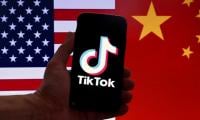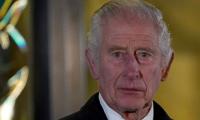The recent visit of Chinese President Xi Jinping to the US – the first after the change of guards in Washington – concluded without a joint statement or a press conference. The hosts described the visit as a successful exercise in rapport-building between two of the most powerful people in the world. Apart from their symbolism, the only concrete outcome of the parleys was that Xi will host Donald Trump later this year.
Ever since the rise of China as an economic powerhouse, tackling the Asian giant has remained a key question for every US president and his team. Not only that, the China factor has figured prominently in the run-up to every presidential election in recent years, with the contender accusing the incumbent president of being too soft on Beijing and himself promising to take the Chinese bull by the horns once elected.
Leaving aside his signature sense of no-holds-barred that prompts him to use extremely strong language, Donald Trump repeated in 2016 the stance adopted by Mitt Romney four years earlier. Defeated, Romney didn’t have to fulfil his promise. Will Trump be as good as his word? The answer to this question entails looking at the dynamics of Washington-Beijing ties.
The basic matrix of the bilateral relations is this: the US and China are at once competitors and partners. Since the demise of the USSR, the US has been the globe’s sole superpower and has sought to shape international relations in its own fashion – at times with success and at times without success. But now it has to reckon with Beijing – and to a certain extent Moscow as well – which is a superpower in the making. This makes the two countries rivals.
That said, both countries have stakes in preserving the current international economic order and, therefore, maintaining global peace and security. China is one of the biggest beneficiaries of economic and trade liberalisation and, unlike Russia during the cold war, has no alternative economic model to espouse. The economy is the mainstay of China’s power and it is alive to the fact that economic growth predicates a peaceful, predictable and stable environment. The last thing a country on the road to global economic supremacy can afford is war. Hence, cooperation is in the interest of both China and the US.
The two countries have quite a few issues on the table. Arguably, the foremost talking point is America’s ever-growing trade deficit with China. Between 2010 and 2016, US imports from China went up from $383 billion to $482 billion. During the same period, US exports to China increased from $92 billion to $115 billion. During the last seven years, the US trade deficit with China rose from $291 billion to $366 billion – which accounts for 46 percent of the global US trade deficit of $797 billion. The galloping trade imbalance is bound to raise deep concerns in the US.
A country’s high trade deficit means that it is losing a large number of jobs to foreigners. Not only that, the country has to borrow to sustain its adverse balance of trade. In the case of the US, public debt as percentage of the GDP has gone up from 76 in 2008 to 104 in 2015. Nearly half of the total national debt is owed to foreigners, with China having the lion’s share. Today’s national debt is a drag on consumption tomorrow. The policy space available to a debtor country also shrinks.
The US Bureau of Labor Statistics puts the number of jobs lost in the country’s manufacturing sector between 1999 and 2011at six million. Obviously, trade is one of the several factors responsible for unemployment. For those who are wont to making sweeping statements, it is convenient to point a finger at foreign trade. The electorate also feels relieved when it has one enemy to vent all its anger on.
Not surprisingly, saving jobs and reviewing bilateral and multilateral trade deals – of which the US is a signatory – were the highlights of Trump’s presidential campaign. Since China is the single largest source of the US trade deficit, it was logical for Trump to lay all the blame at Beijing’s door.
It is customary for American policymakers to attribute their trade deficit to ‘unfair’ trade practices by China – particularly its alleged currency manipulation. Beijing has long been accused of having an undervalued exchange rate, which makes its exports more price-competitive and imports more expensive than they would be if the value of the Yuan, the Chinese currency, were determined by market forces. Since the US is China’s largest trading partner, the firms which are believed to suffer most from the alleged currency manipulation are American. It is further alleged that since the US trade regime is far more open and transparent than the Chinese system, the companies doing business with China are at perpetual disadvantage.
Granted that some allegations are valid, would Trump go ahead with his pre-poll pledge of officially declaring China a currency manipulator and impose punitive duties on Chinese imports? Despite all his rants and raves, Trump may desist from taking such a drastic step for quite a few reasons. In China, US consumers have a cheap source of imports and any additional duties on Chinese products may substantially bring down consumer spending and, therefore, slow down the economy.
China is also the capital source of financing the US current account deficit through huge investments in the US bond market. In the event of punitive measures, Beijing may retaliate by disinvesting part of its holdings to the detriment of the US economy. Besides, US multinational enterprises (MNEs) have invested billions of dollars in the enormous Chinese market. A considerable part of China’s exports are also manufactured by these MNEs. As a result, punishing China will also hurt US companies and have a backlash at home. While addressing his country’s commercial concerns vis-a-vis China, Trump will therefore be walking a tightrope.
North Korea’s nuclear and missile programmes are another cause of tension between the two major powers. Pyongyang, a Beijing ally, is believed to be developing inter-continental range missiles that could hit targets in the West, including the US. Already it has short-range missiles that can be used against South Korea, a key American ally. Xi’s recent visit coincided with US strikes on Syrian air force assets. Many observers are of the view that those strikes had an implicit message for North Korea as well as China. Trump has also warned in so many words that his country will solve the problem of a nuclear North Korea, regardless of whether it receives any help from Beijing.
On its part, China advocates the denuclearisation of the Korean peninsula and a negotiated settlement of North Korea’s nuclear programme. The position was reiterated by Xi in his telephonic conversation with Trump, which took place a few days after the summit.
Another potential explosive area is the South China Sea (SCS). Part of the Pacific Ocean, it is one of the most important shipping routes in the world and is also believed to be rich in oil and gas. Sovereignty over the SCS or its parts is claimed by different countries, including China. Although officially the US does not take sides on the claims, it maintains military presence in the area in the name of the freedom of navigation. Both Washington and Beijing accuse each other of militarising the SCS.
The writer is a freelance countributor.
Email: hussainhzaidi@gmail.com
People stand in line up as election officials check their ballot papers during voting general election at a polling...
Women show their voter identity cards as they stand in a queue before casting their votes in Agartala. — PTIThe 18th...
Former prime minister Imran Khan. — Instagram/ imrankhan.ptiAn old saying has it that “when you dance with the...
Kashmiris in Indian illegally occupied Kashmir protesting against the Indian occupation as the forces of India looked...
A representational image showing residents walking at a wholesale market in Karachi. — AFP/FileOnce again there is...
A representational image showing late Pakistani human rights activist and Supreme Court lawyer Asma Jahangir. —...







